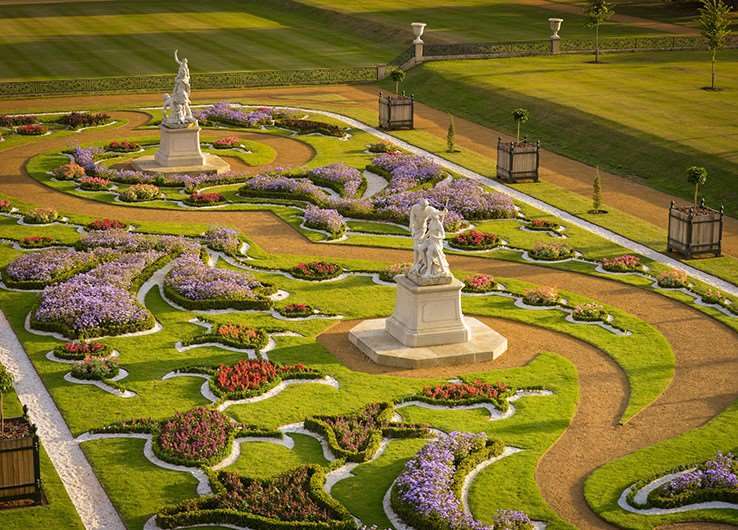
The French parterre garden at Wrest Park (Source: english-heritage.org.uk)
For centuries, gardens have been a reflection of human control over nature. The formal, clipped hedges of 17th-century French gardens, the symmetrical beds of Victorian parterres, and the manicured lawns of suburban homes all symbolize an aesthetic deeply rooted in order and precision. However, in the face of climate change, habitat destruction, and biodiversity loss, the traditional approach to gardening is evolving: gardeners and designers are rethinking this aesthetic.
Since the early 2000s, there has been a clear shift towards naturalistic planting design, a movement that embraces biodiversity, seasonality, and the beauty of imperfection and prioritizes ecological function plant communities that work in harmony rather than in strict, controlled arrangements. More than just a style, this philosophy embraces wildness as a design tool, creating spaces that not only look beautiful but also provide food, shelter, and resilience for wildlife.
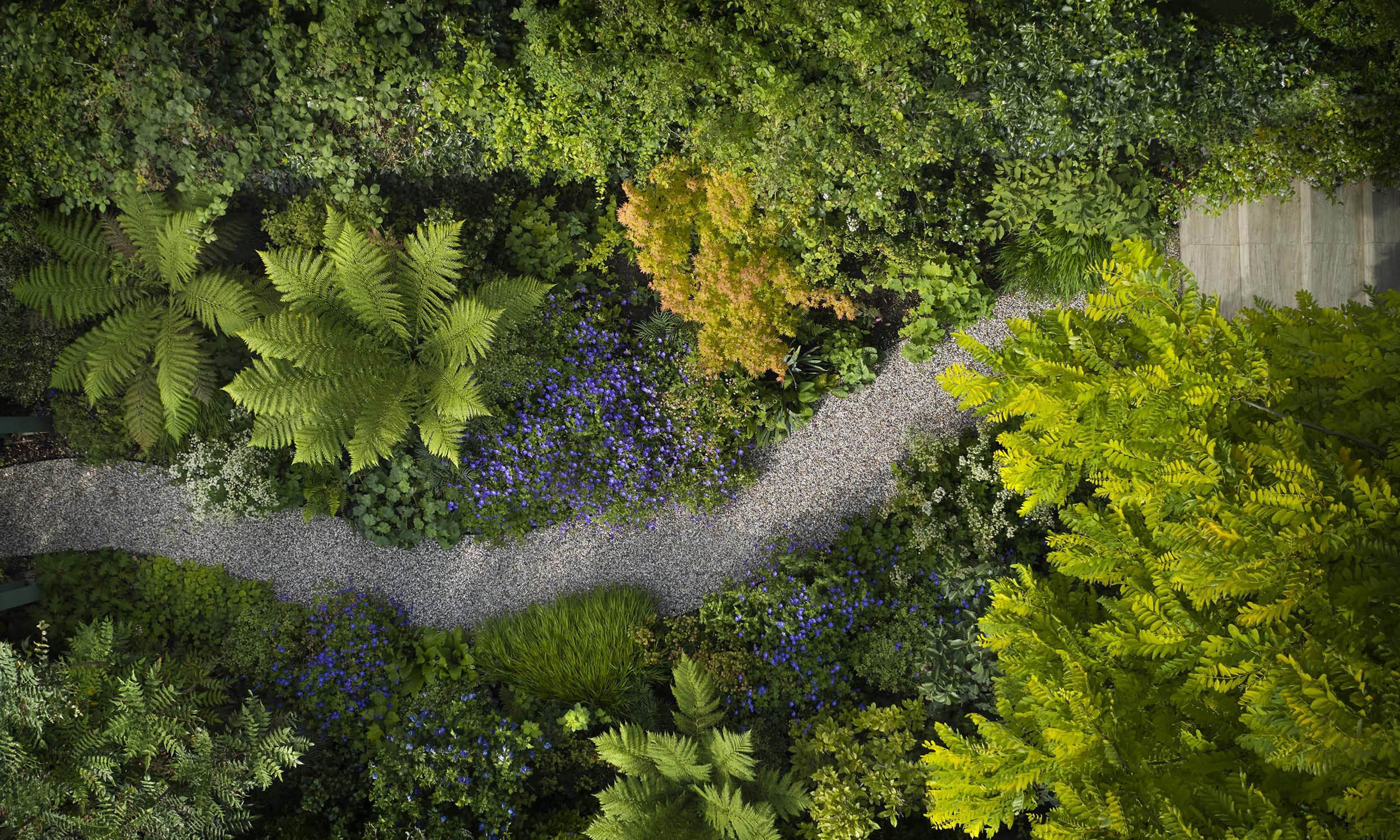
Private garden near Queen's Park, London (Source: stefanomarinaz.com)
The movement has been led by visionaries such as Piet Oudolf, Tom Stuart-Smith, James Hitchmough, Dan Pearson, Sarah Price, and Peter Korn, each with their own interpretation of what it means to design with nature. From immersive meadows and rugged gravel gardens to experimental planting in extreme environments, their work challenges conventional ideas of beauty, encouraging us to see gardens as dynamic, living systems rather than static compositions. Their gardens celebrate wildlife-friendly, resilient, and self-sustaining plant communities, offering an antidote to the rigid, labor-intensive gardens of the past.
The Rise of Naturalistic Planting Design
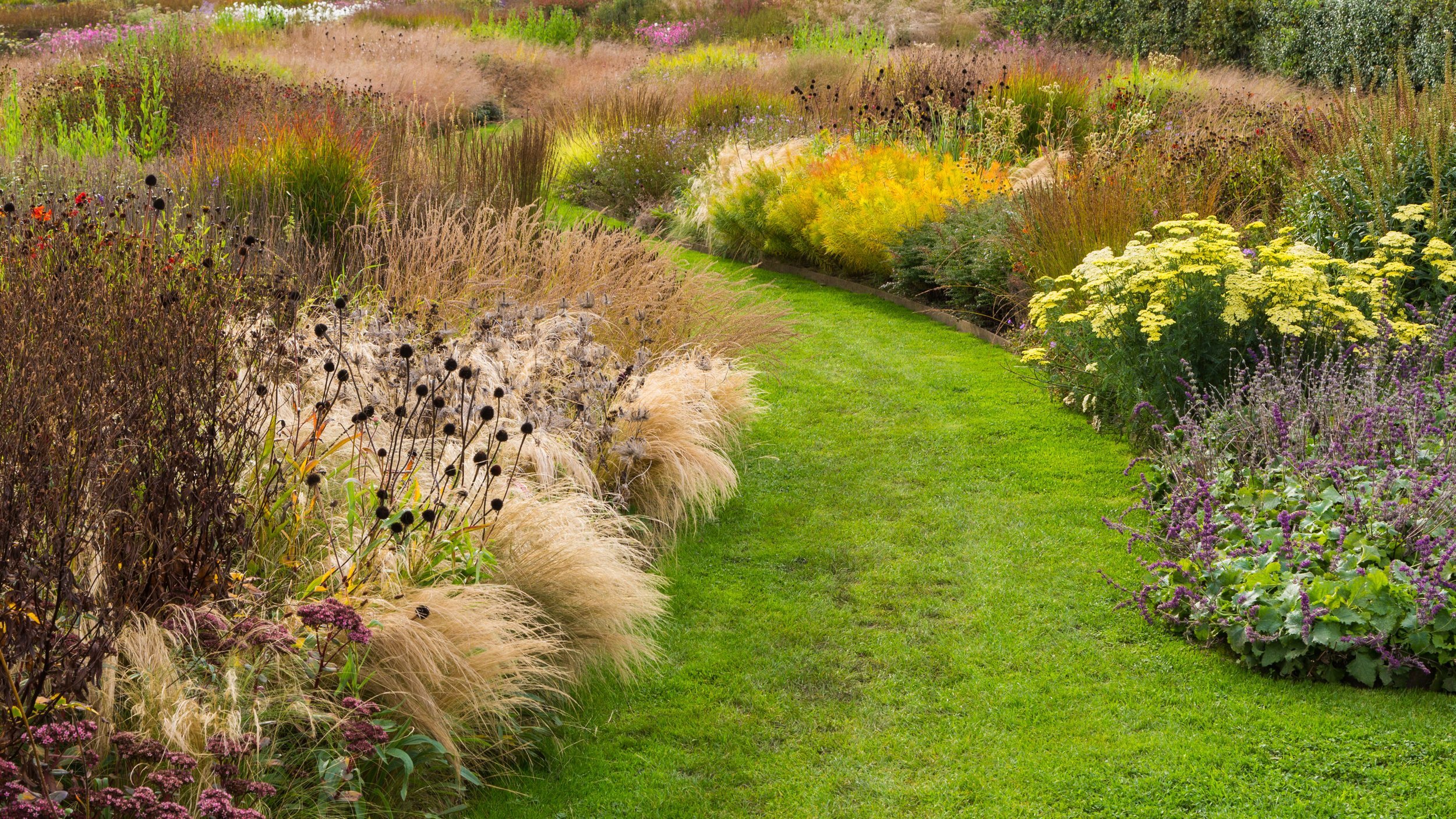
Piet Oudolf (Source: Chris Denning_vergegardendesign.com)
The naturalistic planting movement seeks to create gardens that work with, rather than against, nature. By selecting plants for their ecological function—whether providing pollen, nectar, shelter, or resilience to drought—gardeners can cultivate landscapes that are as rich in wildlife as they are in aesthetic appeal.
This philosophy is best exemplified by Piet Oudolf, a Dutch garden designer whose work emphasizes seasonal interest, structure, and habitat creation. His gardens embrace perennials, grasses, and naturalistic drifts of plants that change beautifully with the seasons.
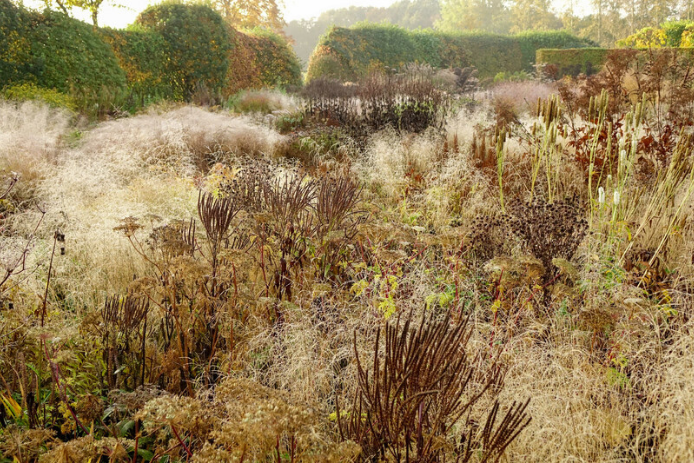
Piet Oudolf (Source: Piet Oudolf via Hauser & Wirth)
Piet Oudolf: The Beauty of Seasonal Evolution
For Dutch designer Piet Oudolf, a garden is more than just a showcase of flowers—it is a performance of form, texture, and movement that unfolds throughout the seasons. Oudolf’s philosophy centers around the idea that gardens should be as appealing in winter as in summer. His philosophy is built on the longevity of plants, selecting species that retain structural interest even in dormancy. Rather than treating the garden as something to be constantly maintained and refreshed, Oudolf embraces decay as part of the design, allowing seed heads, fading flowers, and dried grasses to contribute to the landscape’s evolving aesthetic.
His signature style—broad, flowing drifts of perennials and grasses—creates an immersive experience where plants blend seamlessly, evoking the romance of wild meadows. Gardens such as the High Line in New York and Lurie Garden in Chicago embody his belief that a garden should be as compelling in winter as in summer. The skeletal remains of Echinacea, the golden haze of Panicum grasses, and the rustling stems of Miscanthus are all as integral to his designs as the vibrant blooms of high summer.
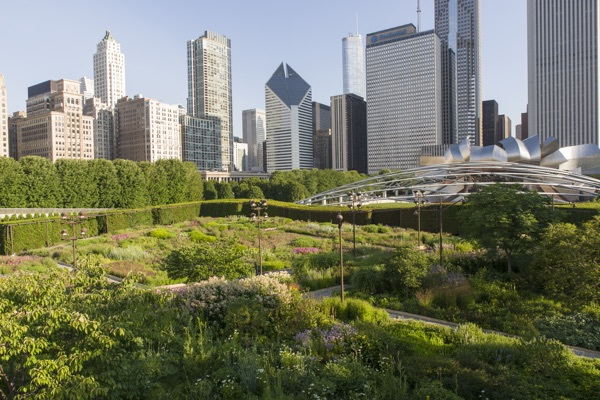
Piet Oudolf (Source: luriegarden.org)
But Oudolf’s work is not just about aesthetics. His planting schemes support biodiversity, offering rich foraging opportunities for pollinators and habitat for insects even as the seasons shift. His approach teaches us that gardens should not be frozen in time but allowed to change, mature, and even fade gracefully.
Examples of Piet Oudolf Gardens
-
High Line, New York, USA – A groundbreaking urban park built on a disused railway, showcasing resilient perennials and grasses.
-
Lurie Garden, Chicago, USA – A naturalistic prairie-style garden that thrives in an urban setting.
-
Scampston Hall, UK – A modern take on a walled garden with sweeping, relaxed planting.
Key Plants in Oudolf’s Gardens
-
Echinacea purpurea (Purple Coneflower) – Nectar-rich for pollinators.
-
Veronicastrum virginicum (Culver’s Root) – Tall, elegant spikes loved by bees.
-
Panicum virgatum (Switchgrass) – A structural grass that provides winter interest.
-
Persicaria amplexicaulis (Mountain Fleece) – A long-flowering, low-maintenance perennial.
Sand, Gravel, and Rubble Gardens: The Future of Resilient Planting
For those looking to push naturalistic gardening even further, the work of Tom Stuart-Smith and James Hitchmough explores experimental planting in poor, dry soils. These designers use sand, gravel, and rubble to mimic nutrient-poor environments where highly diverse, drought-resistant plant communities can thrive.
Tom Stuart-Smith: A Painterly Approach to Wildness
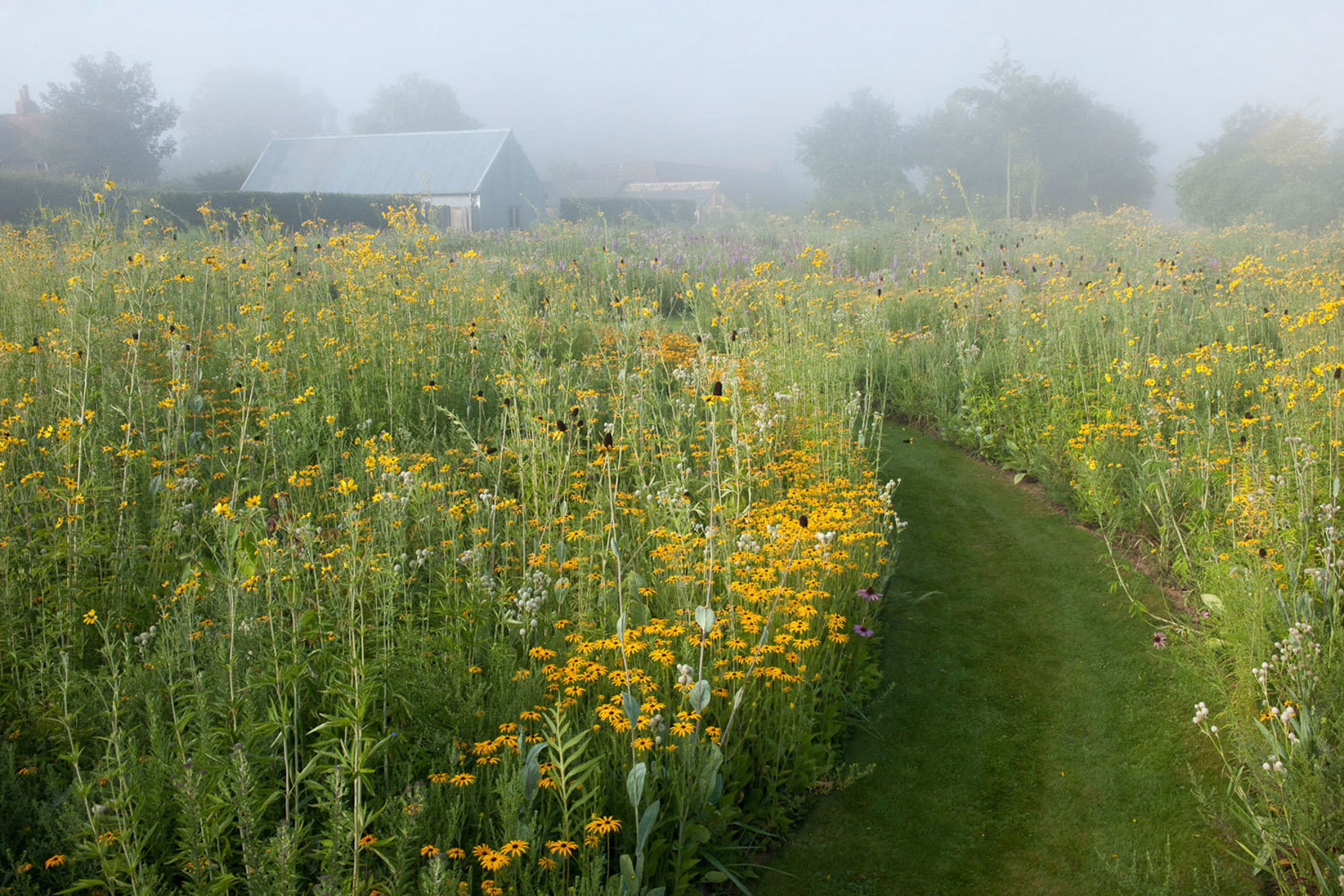
Meadows and praries (Source: tomstuartsmith.co.uk)
British landscape architect Tom Stuart-Smith approaches gardening as an act of composition and immersion. His designs are deeply atmospheric, blurring the line between cultivated and wild landscapes. He believes in layered planting, where perennials, grasses, and shrubs interact in dynamic and unpredictable ways, creating rich textures and a sense of natural evolution.
At places like Broughton Grange in Oxfordshire, Stuart-Smith has transformed traditional gardens into sweeping meadows of perennials, framed by clipped hedging to provide a sense of contrast. His ability to balance formality with wildness is a hallmark of his work—he doesn’t reject structure entirely but instead allows looser, naturalistic elements to soften and counterbalance it.
For Stuart-Smith, a garden is not a static display but a living, breathing environment that responds to its surroundings. His work often incorporates native and drought-resistant species, ensuring resilience in changing climates. The movement of plants, the play of light through tall grasses, and the shifting seasonal palette all contribute to his vision of gardens as immersive, almost dreamlike spaces.
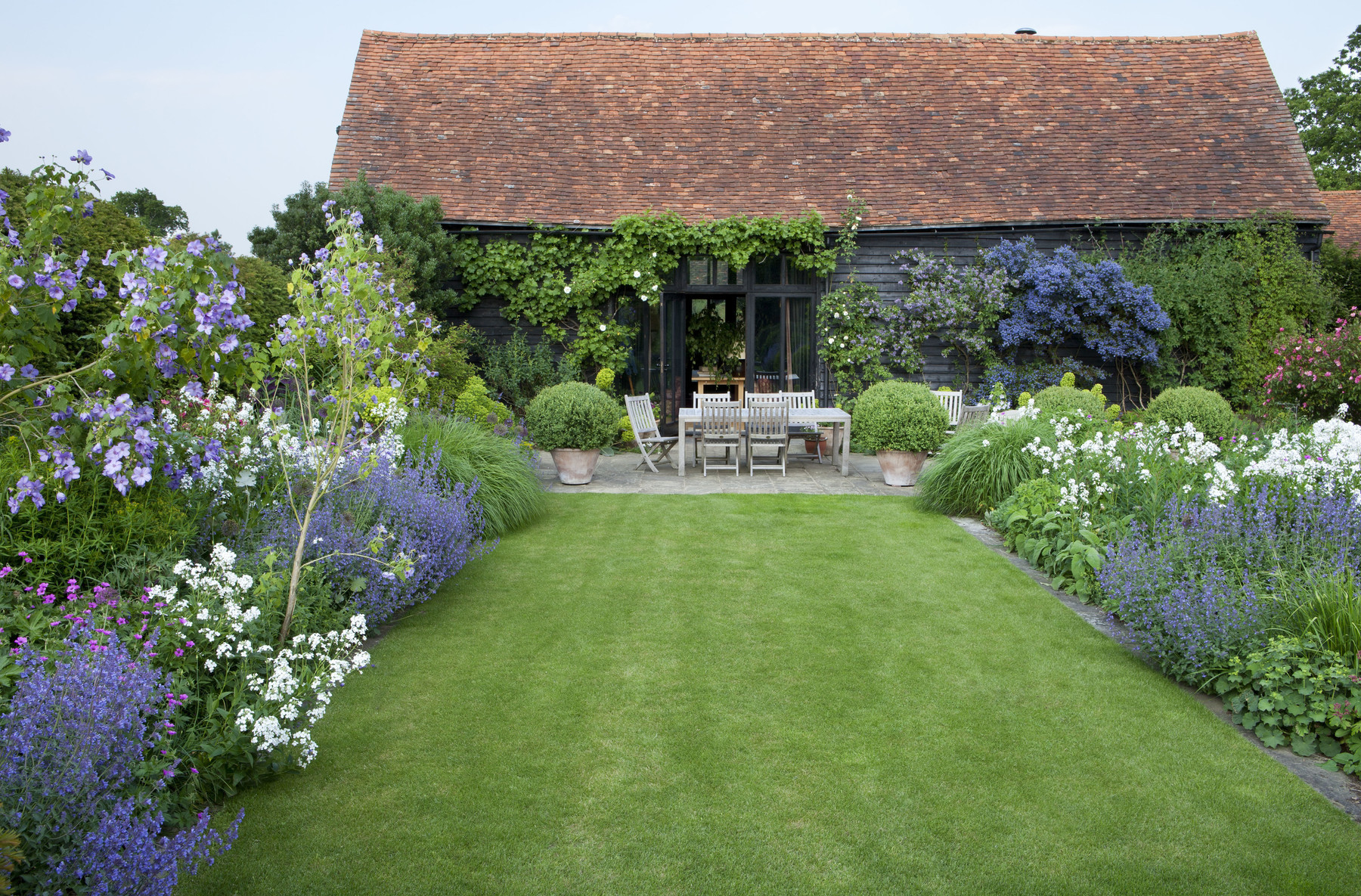
West Garden (Source: tomstuartsmith.co.uk)
Examples of Tom Stuart-Smith Gardens
-
Broughton Grange, UK – A large-scale perennial meadow integrated with formal garden elements.
-
The Hepworth Wakefield Garden, UK – A resilient, wildlife-friendly urban garden designed for year-round interest.
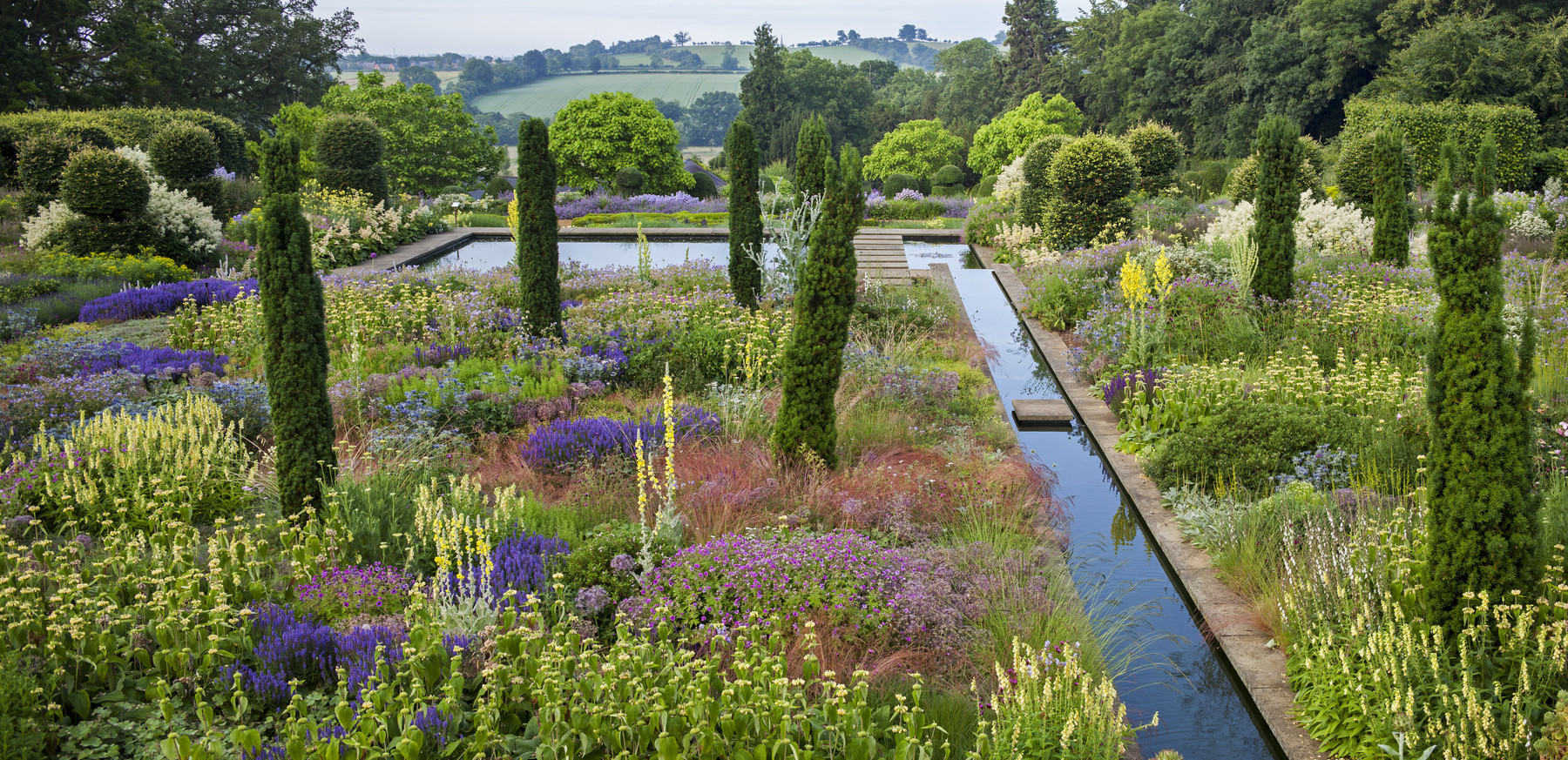
Broughton Grange - (Source: tomstuartsmith.co.uk)
Key Plants in Stuart-Smith’s Gardens
-
Salvia nemorosa (Balkan Clary) – Drought-tolerant and long-flowering.
-
Stipa gigantea (Giant Oat Grass) – Adds architectural movement.
-
Eryngium giganteum (Miss Willmott’s Ghost) – A striking metallic-blue thistle.
-
Geranium ‘Rozanne’ (Cranesbill) – A long-flowering perennial with violet-blue flowers, excellent for ground cover.
-
Veronicastrum virginicum ‘Album’ (Culver’s Root) – A tall perennial with elegant white spires that add verticality.
-
Achillea millefolium ‘Terracotta’ (Yarrow) – A drought-tolerant plant with warm orange-yellow flower heads.
James Hitchmough: Wildflower Meadows in the Urban Jungle

James Hitchmough - The Merton borders at University of Oxford Botanic Garden (Source: gardenista.com)
Professor James Hitchmough takes an experimental, science-driven approach to naturalistic planting. His designs are inspired by global grassland ecosystems, from the steppes of Central Asia to North American prairies. Unlike traditional ornamental gardens, which often rely on rich, fertile soil, Hitchmough has pioneered the use of nutrient-poor environments—sand, gravel, and rubble—to cultivate self-sustaining, low-maintenance plant communities. He is known for his bold use of herbaceous perennials and grasses in public spaces.
This radical approach has been put into practice in public spaces like the Queen Elizabeth Olympic Park in London, where vast meadows of wildflowers bloom in carefully curated succession, providing both visual spectacle and vital habitat for urban wildlife. Hitchmough’s research has shown that such plantings not only require less maintenance but also create thriving, biodiverse ecosystems in places where conventional gardens would struggle.
His work challenges the idea that gardens must be meticulously tended. Instead, he advocates for a let-it-grow philosophy, selecting plants that can thrive with minimal intervention while still delivering an ever-changing display of color and texture.
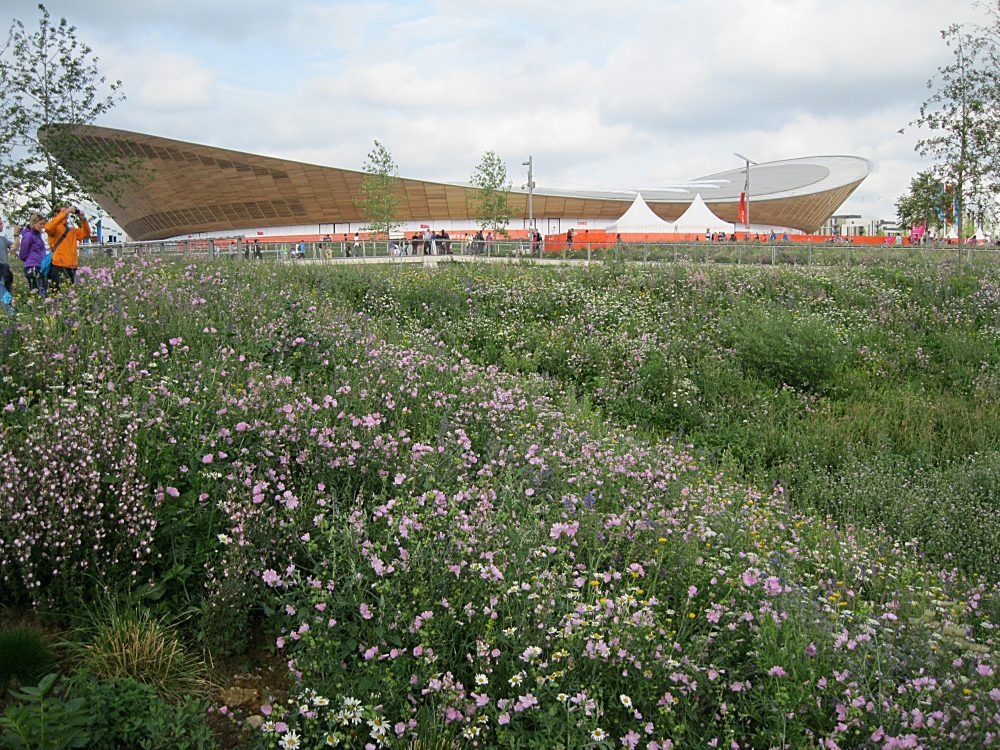
Queen Elizabeth Olympic Park in London in 2012, London (Source: thegardenvisitor.co.uk)
Examples of James Hitchmough Gardens
-
Queen Elizabeth Olympic Park, UK – Features stunning wildflower meadows inspired by global grassland ecosystems.
Key Plants in Hitchmough’s Gardens
-
Verbena bonariensis (Tall Verbena) – Provides a haze of purple flowers above grasses.
-
Echinops ritro (Globe Thistle) – A magnet for pollinators.
-
Echinacea pallida (Pale Purple Coneflower) – A tall prairie perennial with graceful, drooping pink petals that attract pollinators.
-
Agastache ‘Blue Fortune’ (Giant Hyssop) – A bee-friendly plant with spiky lavender-blue flowers and fragrant foliage.
-
Coreopsis verticillata ‘Moonbeam’ (Threadleaf Tickseed) – A delicate, fine-textured plant with pale yellow flowers.
-
Aster amellus ‘King George’ (Italian Aster) – A late-season bloomer with rich purple flowers that support pollinators.
Dan Pearson: The Power of Intuition and Place

Lowther Castle (Source: danpearsonstudio.com)
For Dan Pearson, a garden is not something imposed upon the land—it is something that emerges from the land itself. His designs are deeply contextual, responding to the natural topography, soil, and existing vegetation of a site. His gardens often mimic woodland edges, meadows, and riverbanks.
His work at Tokachi Millennium Forest in Japan exemplifies his belief that a garden should feel as though it has always belonged. Here, he introduced drifts of woodland perennials and native grasses, allowing the planting to flow organically through the landscape, rather than being rigidly organized. His gardens often mimic natural ecosystems, whether it be a woodland clearing, a riverbank, or a windswept meadow.
Pearson’s approach is gentle and meditative, relying on subtlety rather than bold contrasts. His work reminds us that gardening is about observation, patience, and working in harmony with nature rather than against it.
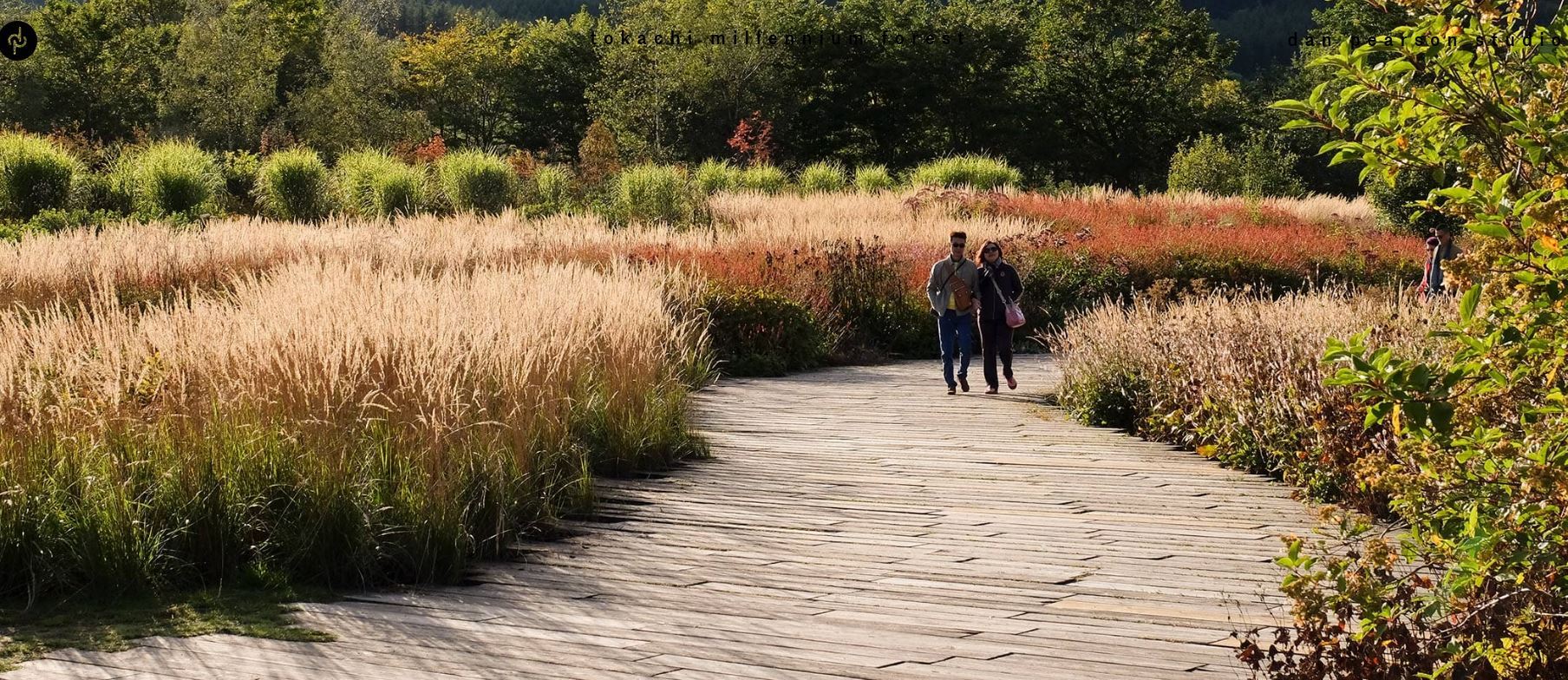
Tokachi Millennium Forest, Japan (Source: danpearsonstudio.com)
Examples of Dan Pearson Gardens
-
Tokachi Millennium Forest, Japan – A large-scale, nature-led garden.
-
Hillside Garden, Chelsea Flower Show – A relaxed, naturalistic show garden.
Key Plants in Pearson's Gardens
-
Geranium pratense (Meadow Cranesbill) – A delicate blue-flowered geranium that thrives in meadows and naturalistic plantings.
-
Verbena bonariensis (Tall Verbena) – An airy, self-seeding perennial with purple flowers that attract pollinators.
-
Eupatorium maculatum (Joe-Pye Weed) – A tall perennial with dusky pink flowers, loved by bees and butterflies.
-
Gillenia trifoliata (Bowman’s Root) – A graceful, airy perennial with white star-shaped flowers.
-
Astrantia major (Great Masterwort) – A woodland plant with intricate, starry flowers in shades of pink and white.
Sarah Price: The Artist’s Eye for Naturalistic Planting
Trained as a fine artist, Sarah Price brings a painterly sensibility to garden design. Her gardens are characterized by soft, romantic plantings, often inspired by Mediterranean and dry-climate landscapes. She has an intuitive grasp of colour and texture, using plants much like a painter uses brushstrokes to create atmosphere and depth.
Her work at the Ditchling Museum Garden and at Chelsea Flower Show showcases her ability to create spaces that feel both intentional and spontaneous. She works with subtle contrasts—wispy grasses against structural perennials, delicate flowers punctuated by architectural seed heads—to craft landscapes that are immersive and timeless.
Examples of Sarah Price Gardens
-
The M&G Garden, Chelsea Flower Show – Inspired by Mediterranean landscapes.
-
Ditchling Museum Garden, UK – A small-scale, naturalistic planting scheme.
Key Plants in Price’s Gardens
-
Papaver rhoeas (Corn Poppy) – Creates a natural meadow effect.
-
Achillea millefolium (Yarrow) – Loved by pollinators.
Isabel and Julian Bannerman: A Romantic, Timeworn Aesthetic
Isabel and Julian Bannerman are among the most evocative and imaginative garden designers of their time, weaving a rich tapestry of history, romance, and theatricality into their landscapes. Their gardens are immersive experiences, drenched in the past yet full of life and movement, evoking the grandeur of English garden traditions while celebrating wildness and mystery. Their design philosophy is rooted in a deep respect for history, a passion for craftsmanship, and an instinctive understanding of how architecture and planting can merge to create deeply atmospheric spaces.
At the heart of the Bannermans’ vision is an embrace of imperfection and the passage of time. They reject the sterile, overly manicured aesthetic of many modern gardens in favor of something layered, textured, and deeply personal. They understand that a garden should feel as if it has always been there, evolving organically with its surroundings rather than imposed upon them. This is why weathered stone, crumbling brickwork, and aged timber structures often feature prominently in their work, lending an immediate sense of history and permanence.
Their planting philosophy is equally relaxed, favoring abundant, billowing, and self-seeding plants that spill over pathways and soften architectural edges. Their gardens are full of movement, with tall grasses swaying in the breeze and drifts of scented flowers attracting bees and butterflies. They design for the senses—color and form are important, but so too are scent, sound, and texture. This multi-layered approach means their gardens never feel static; they are dynamic, constantly shifting with the seasons and the light.
They are also champions of the “power of place,” ensuring that every garden they create feels utterly in tune with its setting. Whether restoring a historic estate or designing a new walled garden, they work with the natural lie of the land, enhancing its innate beauty rather than reshaping it to fit a rigid design.
Examples of Bannerman Gardens
-
Trematon Castle, UK – A romantic walled garden filled with nectar-rich plants.
-
Houghton Hall, Norfolk - A truly theatrical landscape, blending classical formality with their signature romantic wildness.
Key Plants in Price’s Gardens
-
Verbascum bombyciferum (Broussa mullein) - Tall, silvery spikes standing proudly in the sunlight
-
Allium sphaerocephalon (round-headed leek) - The distinctive drumstick allium, adding a pop of deep purple.
-
Echium pininana (Tower of Jewels) - their towering blue spires beloved by pollinators.
-
Miscanthus sinensis ‘Morning Light’ (Eulalia 'Morning Light') - A graceful ornamental grass
-
Salvia nemorosa ‘Caradonna’ (Balkan clary 'Caradonna') - With its deep violet-blue spires adding richness to the palette
-
Taxus baccata (English yew) -
-
Nigella damascena (Love-in-a-Mist) -Adds a delicate, airy quality
-
Agapanthus africanus (African Lily) - Its bold blue blooms standing out against the muted greens of the foliage.
Peter Korn: Pushing the Boundaries of Resilient Gardening
Perhaps the most radical of them all, Peter Korn is redefining what it means to cultivate a garden in extreme conditions. Based in Sweden, Korn has created a pioneering nursery and experimental garden where plants grow in deep beds of sand rather than traditional soil. His method challenges conventional horticultural wisdom, proving that a vast diversity of plants can thrive in nutrient-poor, well-draining environments with minimal intervention.
Korn’s work is a testament to resilience and adaptability, demonstrating that by selecting the right plants for the right conditions, we can reduce dependence on irrigation, fertilizers, and chemical interventions. His philosophy is not just about aesthetics but about sustainability, urging gardeners to rethink how they work with their environment.
Examples of Dan Pearson Gardens
- Experimental Garden, Eskilsby, Sweden - The garden is home to an incredibly diverse range of species from around the world, including alpines, Mediterranean plants, and woodland perennials.
-
Göteborgs Botaniska Trädgård (Gothenburg Botanical Garden), Sweden - Strong focus on self-sustaining ecosystems
Key Plants in Peter Korn’s Gardens
-
Allium sphaerocephalon (Drumstick Allium) – A resilient, pollinator-friendly bulb.
-
Dianthus carthusianorum (Carthusian Pink) – A tough, drought-tolerant wildflower.
-
Helichrysum italicum (Curry Plant) – A Mediterranean aromatic herb with silver foliage
-
Corydalis lutea (Yellow Corydalis) – A shade-loving perennial that naturalizes in rocky conditions
-
Verbascum bombyciferum (Turkish Mullein) – A striking, architectural biennial
-
Dianthus gratianopolitanus (Cheddar Pink) – A drought-tolerant pink-flowered perennial
Conclusion: A Garden That Lives, Breathes, and Evolves
Embracing the untidy edges of your garden is not about neglect—it’s about rethinking what beauty means. A garden can be both designed and wild, structured yet loose, intentional but ever-changing.
By embracing the untidy edges of your garden, you not only reduce maintenance but also support a wide range of biodiversity.
Whether you follow Piet Oudolf’s structured wildness and his seasonal compositions, Tom Stuart-Smith’s dry planting techniques and immersive landscapes, or Peter Korn’s radical resilient sand gardens, there are countless ways to make space for nature.
Letting go of rigid control and allowing plants to thrive in their own way is not just an aesthetic choice—it’s an act of conservation.
Featured Posts
Blog Topics
Urban environment & Public spaces
Stay updated with the latest articles and insights from The Landscape Lab. Here, you will find valuable information and engaging content.
Waterfront & Coastal Resilience
Stay updated with the latest articles and insights from The Landscape Lab. Here, you will find valuable information and engaging content.
Captivating Photography
Stay updated with the latest articles and insights from The Landscape Lab. Here, you will find valuable information and engaging content.
Why Read The Landscape Lab Blog?
The way we design and interact with landscapes is more important than ever. As cities expand, coastlines shift, and climate change reshapes our world, the choices we make about land, water, and urban spaces have lasting impacts. The Landscape Lab Blog is here to spark fresh conversations, challenge conventional thinking, and inspire new approaches to sustainable and resilient design.
If you’re a landscape architect, urban planner, environmentalist, or simply someone who cares about how our surroundings shape our lives, this blog offers insights that matter. We explore the intersections between nature and the built environment, diving into real-world examples of cities adapting to rising sea levels, innovative waterfront designs, and the revival of native ecosystems. We look at how landscapes can work with nature rather than against it, ensuring long-term sustainability and biodiversity.
By reading The Landscape Lab, you'll gain a deeper understanding of the evolving field of landscape design—from rewilding initiatives to regenerative urban planning. Whether it’s uncovering the forgotten history of resilient landscapes, analyzing groundbreaking projects, or discussing the future of green infrastructure, this blog provides a space for learning, inspiration, and meaningful dialogue.
Location:
The Landscape Lab
123 Greenway Drive
Garden City
NY 12345
United Kingdom
Contact Number:
Get in Touch:
contact@thelandscapelab.co.uk
© 2025 thelandscapelab.co.uk - Your go-to blog for landscaping insights
